Duke Energy continues power line project despite pushback from rural Spartanburg community
Roughly 25 minutes south of Spartanburg, tucked away in the southwest corner of the county, the Green Pond community is nestled between pine trees and pastureland.
Many of the homeowners in the area are farmers. Others moved to get away from the city and connect to nature.
But right now, quiet Green Pond is at the center of a battle between long-time residents and power company Duke Energy. As explosive growth continues around the Upstate, the need for reliable energy increases. In an effort to expand the state’s power grid, Duke plans to place an energy substation through the sleepy Green Pond community.
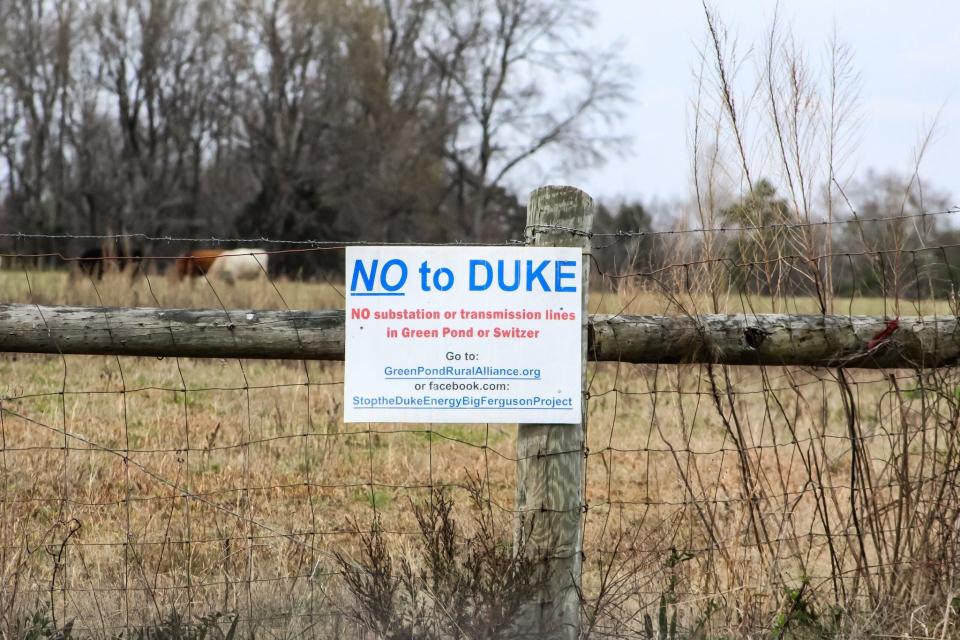
Since residents first learned of the project in 2022, they’ve voiced concerns. They said they’re worried for their health because of electric and magnetic fields from the substation, about their property values decreasing and the threat to the natural beauty of their land. Although locals say Duke has heard their concerns at a number of public meetings, they haven’t made a difference.
On March 5, Duke held one final meeting for residents to give input on the proposed transmission routes that could soon slice through their land. About 200 people filled a church gym lined with Duke’s informational posters about the project while Duke Energy employees spoke to attendees. In a few months, an announcement will be made on the planned route and residents will learn whose land will house transmission lines, generally referred to as power lines.
Duke’s project falls beneath the energy threshold that would require state oversight, so the company doesn’t need permission to build the new line.
If a project is over 125-kilovolts, the Public Service Commission, which regulates utilities in the state, would have to review and oversee it. However, Duke’s project is 100-kilovolts.
"We’ve got 100% of people that are dissatisfied now. Once they announce where they're going to go, 80% are going to be happy to be 20% are going to be unhappy, and that's the whole plan," resident Tim Brown said.
Sustainability with Sarah: What happened to curbside recycling in the Upstate?
Duke’s Big Ferguson project to center in Green Pond
A substation is a high-voltage electric system that lowers the electric current and allows it to move safely through distribution lines into homes and businesses. Electricity is generated from a power source, like a natural gas plant, and it travels through transmission lines before arriving at the substation.
By the time power gets to a home, it can be an accumulation from several substations.“That's the way the grid works. It's interconnected. This power plant isn't serving this specific customer, it’s serving every customer in between there in some way, form or fashion,” Duke Energy spokesperson Ryan Mosier said.
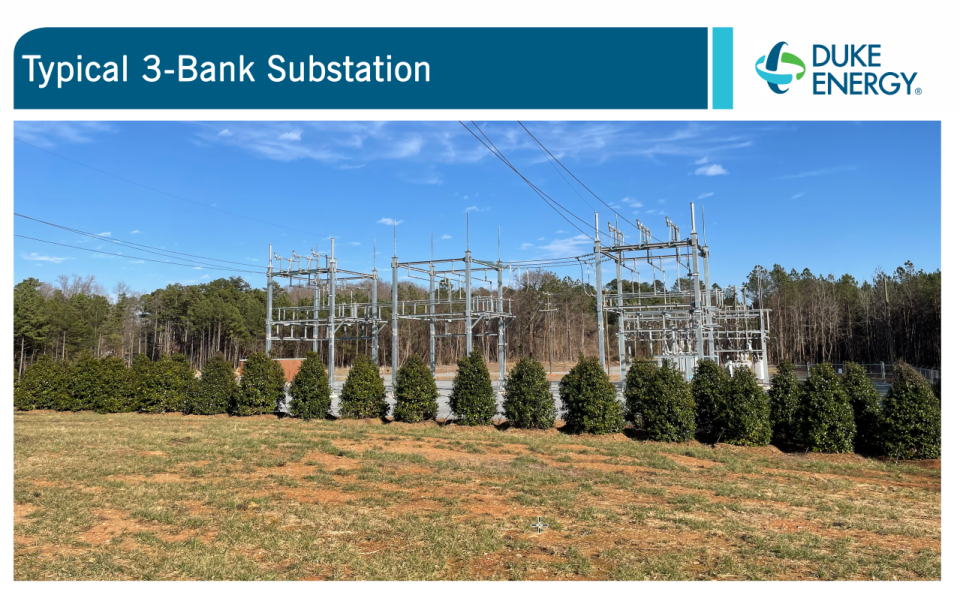
In June 2022, Duke privately bought 17 acres of land near Green Pond Road and Highway 417 to house the new Big Ferguson substation, which shares a name with a creek nearby. Residents learned about it in the fall of 2022 through a letter and attended a meeting with Duke that September. Residents formed the Green Pond Rural Alliance to protect the natural and agricultural history of the area.
Upstate Growth: Greenville and Spartanburg to see water rates increase
Since then, they’ve fought against the project, voicing concerns at meetings, speaking with Duke’s employees and contacting regulatory authorities like the Public Service Commission.
According to Duke’s records, more than two dozen sites were considered for the substation before the Green Pond location was settled on. Before construction can begin, Duke must complete a myriad of assessments to determine the ideal location for each new substation, including wetlands mapping, farmland and flood studies.
Residents resoundingly said they want Duke to place a substation along nearby Highway 101, which runs southwest next to the community. They believe the bustling area would be better suited for a substation and prevent transmission lines from running through people’s yards. Green Pond Rural Alliance President Rodney Neal even made his own map with new proposed substation spots that he superimposed over a map from Duke.
However, Duke said the Big Ferguson substation will most efficiently tie the existing grid together to provide people in the area with power.
To connect the substation with others nearby, Duke will need to build a transmission line in the area. The company has identified several potential routes. Using feedback, Duke will work over the next few months to choose the combination of route segments that disrupt the community the least, Mosier said.
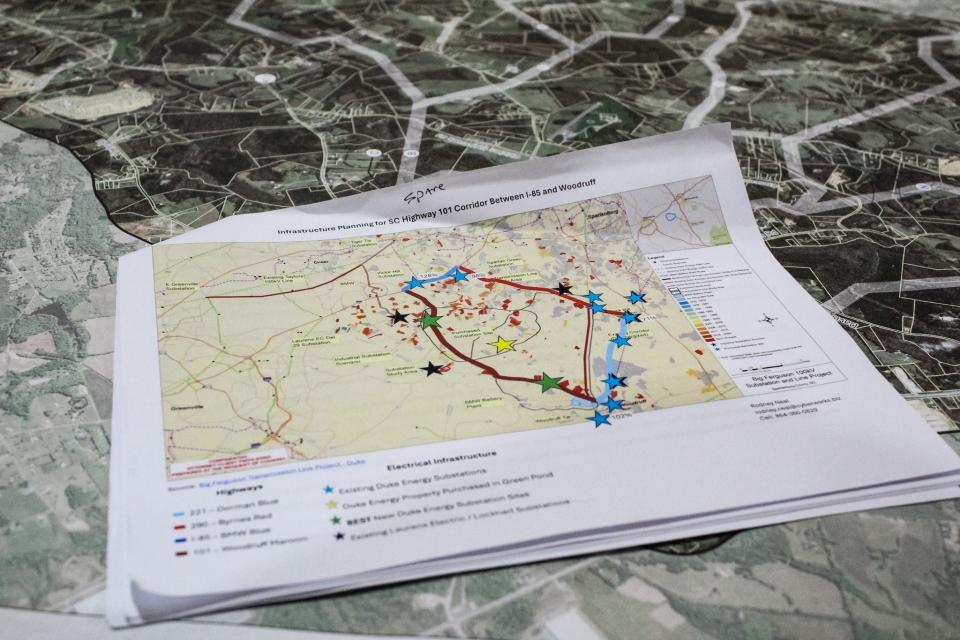
Residents fear substation will impact property values, quality of life
Residents say they are worried the transmission lines will decrease their property value and take away from the natural appeal of the area. They also fear health issues could arise from their proximity to electric and magnetic fields.
Experts have studied the relationship between electric and magnetic fields, or EMF, and health issues for decades. Studies overall have not consistently shown that exposure to EMF increases cancer risk.
According to the National Institute of Environmental Health Sciences, power lines have low levels of radiation that are considered harmless to humans because of their low potency.
For Tyler Rehn and his wife Ashley, the move from Greenville to Green Pond was a natural culmination of their love for the outdoors and desire for a quieter, healthier life. The couple began building their 20-acre home, complete with a barn for their horses and chickens, before they found out about Duke’s substation.
Before they moved, they had a transmission line in their backyard. Rehn said they were excited to get away from it. Their son, Maddox, had leukemia at age five, and the move was part of their desire to lead healthier lives, Rehn said.
"With Maddox and his cancer, that was an important thing that we wanted. This is going to be more of a healthy lifestyle for us," Rehn said. "When [that] happened, it really struck home because we're like, 'Oh my gosh, like that's one of the things we wanted to get away from.'"
While he sits in a rocking chair on the front porch, Rehn affectionately talks about how his sons play in his yard and fish in their neighbor’s pond.
"This is just paradise for them," he said.
Rehn and his neighbors on each side account for more than 200 acres of land in the surrounding area. While the proposed transmission lines don’t cross his property, one of the proposed routes goes through his neighbor’s land.
He pointed to where he and his family can watch the sun set over a hill. If Duke goes with one of the proposed routes, it will cut directly through their line of sight, he said.
After they learned about the project, Rehn and his wife joined the Green Pond Rural Alliance. The meeting Tuesday was intended to be a drop-in event, but members chose to attend together.
"I don't think they thought this was going to happen, but we definitely have gathered the community together and been a unified front," Rehn said. "I don't think there's anyone that we have in our community that's been like, 'Oh, who cares? Let them come down.'"
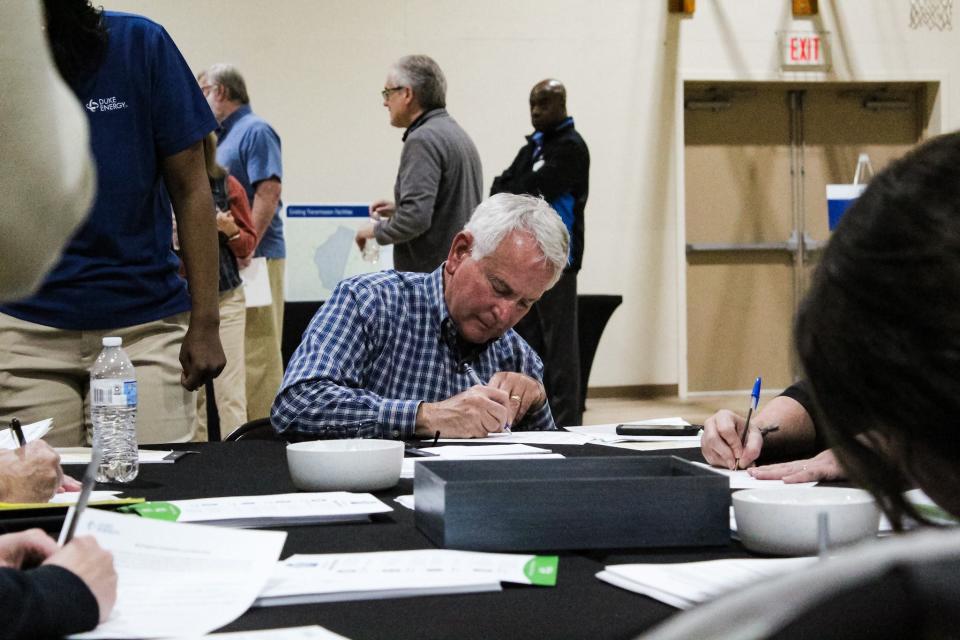
Why does the area need more power?
The Big Ferguson substation conflict comes amid energy concerns across the state, which grew at the highest rate in the country in 2023. South Carolina officials have stated that the Palmetto State is reaching a crisis point.
Residents believe the power from the new substation is fueling growth in subdivisions nearby, rather than their own. But as the area becomes more crowded overall, more stress is added to the grid system.
"This project is important not just solving for the immediate energy needs in this area, but also increasing the overall reliability of service for all customers around the river and across the surrounding counties," Jeff Brooks, a spokesperson from Duke, said.
Brooks said that adding to the network can also make it easier for service to be rerouted during power outages.
Each Green Pond homeowner clarified they aren’t opposed to growth overall. Many residents, including Rehn, said they’d experienced power outages and would like to have more reliable infrastructure. Their concern is purely location-based.
Locals feel that very few options exist for them to challenge the new line. Legally, Duke can use eminent domain once they’ve decided where the transmission line will go if residents refuse to sell parts of their land.
"We have no we have no recourse to say anything about it," Rehn said.
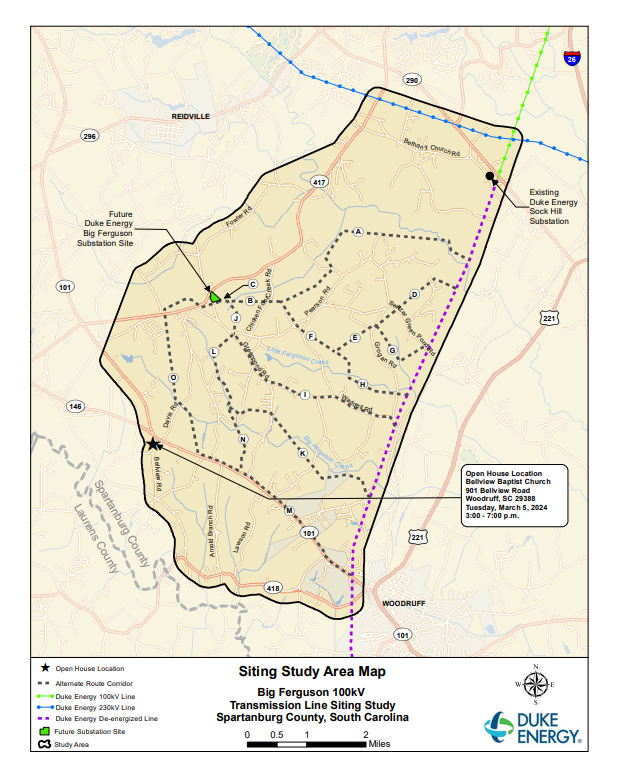
Members of the Green Pond Rural Alliance and others in the community have written more than 50 letters of protest to the Public Service Commission to ask for their oversight and involvement in the project. Several locals expressed an intent to hire a lawyer to fight the development depending on how it moves forward.
Sustainability with Sarah: Why doesn’t South Carolina recycle glass? Here's how you can.
At the end of the day, Neal said he doesn’t blame Duke officials. Instead, he blames South Carolina’s legislature for allowing utility companies to have too much authority.
"To be honest, they don't owe us anything legally. That's one of the things that sticks in our craw," Neal said. "If you want to blame somebody, it's the General Assembly."
In the coming months, a route will be chosen. Construction for the project is slated to be completed by 2027.
Brooks said no matter how great the need for power is, there isn’t a simple answer.
"Communities have grown up around our lines,” Brooks said. "There’s no easy solution to that."
Sarah Swetlik covers climate change and environmental issues in South Carolina's Upstate for The Greenville News. Reach her at sswetlik@gannett.com or on X at @sarahgswetlik.
The Greenville News has a new environment and climate Q&A column. Have a question for Sustainability with Sarah? Ask here or email sswetlik@gannett.com.
This article originally appeared on Greenville News: Duke Energy to expand power grid in Green Pond despite local pushback

